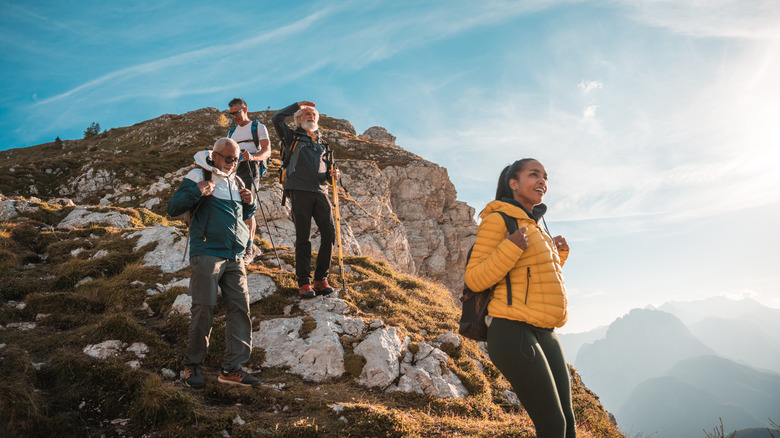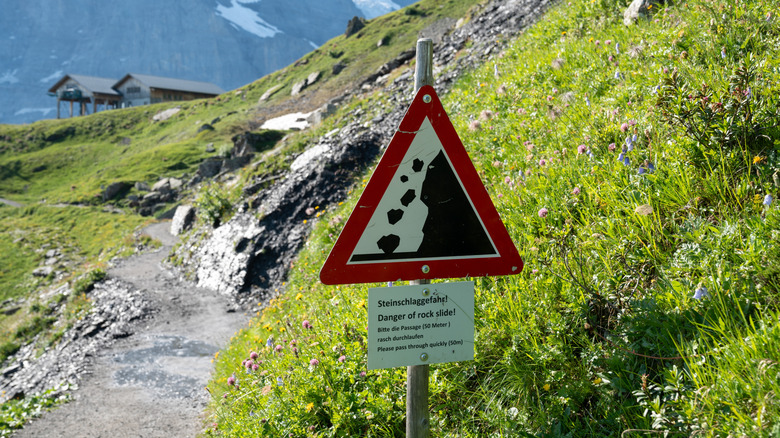Crucial Warning Signs That A Deadly Rockslide May Be Imminent On Your Hike In The Mountains
Hiking in the mountains can be an incredible experience, with views to astonish, peace and quiet, and a huge sense of accomplishment. However, it can also be fraught with hidden perils like rockslides that can put you in danger of injury or death. For instance, an iconic hike in Hawaii's Sacred Falls State Park is now illegal after several people were killed in a rockslide in 1999. Similarly, two people were killed in another rockslide in June 2025 in Banff National Park in Alberta, Canada. That's why, whether you're with a group or hiking solo, safety comes first, and you should always know the warning signs of a rockslide before you set out.
Rockslides and landslides — when rocks, mud, boulders, and debris slide down a slope — can happen during or after a storm, in a place that has had a recent wildfire, or after heavy or sustained rain or snowmelt. If there has been inclement weather in the area recently, you may want to look for another location. Once you're on the trail, and if you're familiar with the area, you might also notice cracks at the top of a scar, where part of the ground is exposed after an earlier landslide or rockslide, or see fresh impact marks from rocks that have fallen recently. These are all good reasons to turn back and let any authorities in the area know.
Additionally, you should be aware of danger areas like the site of earlier rockslides, the base or top of a steep slope, spots where storm water drains, or where normally dry, loose soil is wet. However, it's also important to know the signs of a rockslide that is about to happen or already in the process of happening.
Signs that a rockslide is imminent while hiking
Knowing the areas to avoid is important, and that includes places with signs warning you of the danger of rockslides. However, hikers should also know what an impending rockslide looks and sounds like. For example, if you hear sounds of rushing water or mud — or a stream or creek suddenly stops flowing, increases or decreases in its flow, or goes from clear to muddy quickly — it means a rockslide may be imminent. You may also hear a rumbling that gets louder and louder, or feel a shaking in the ground. Along with this, there might also be sounds like wood cracking, falling trees, shaking ground cover, or tumbling rocks as well. It's possible that you may see dust clouds as well.
If you see and/or hear signs like this, the most important thing is that you don't try to outrun it, as debris can move faster than you can. Instead, run from the sound or visuals to the right or left to get out of the path. If it's upon you, don't try to hide in front of a large rock or tree as they break on top of you. If you definitely can't get out of the way, curl in a ball and protect your head and neck.
Finally, if you choose to go hiking in a dangerous area (and really, for any old hike), you should always let someone know where you're going and have set check-in times. If there is a ranger station or visitor center nearby, it's also worth letting them know you're heading out, where you're planning to be, and asking if there are any warnings about the trail. Finally, you should also use the last-minute safety hack that can save your life: leaving information about your hike, itinerary, and emergency contact information in your car, whether folded on your seat or in your glove box.

